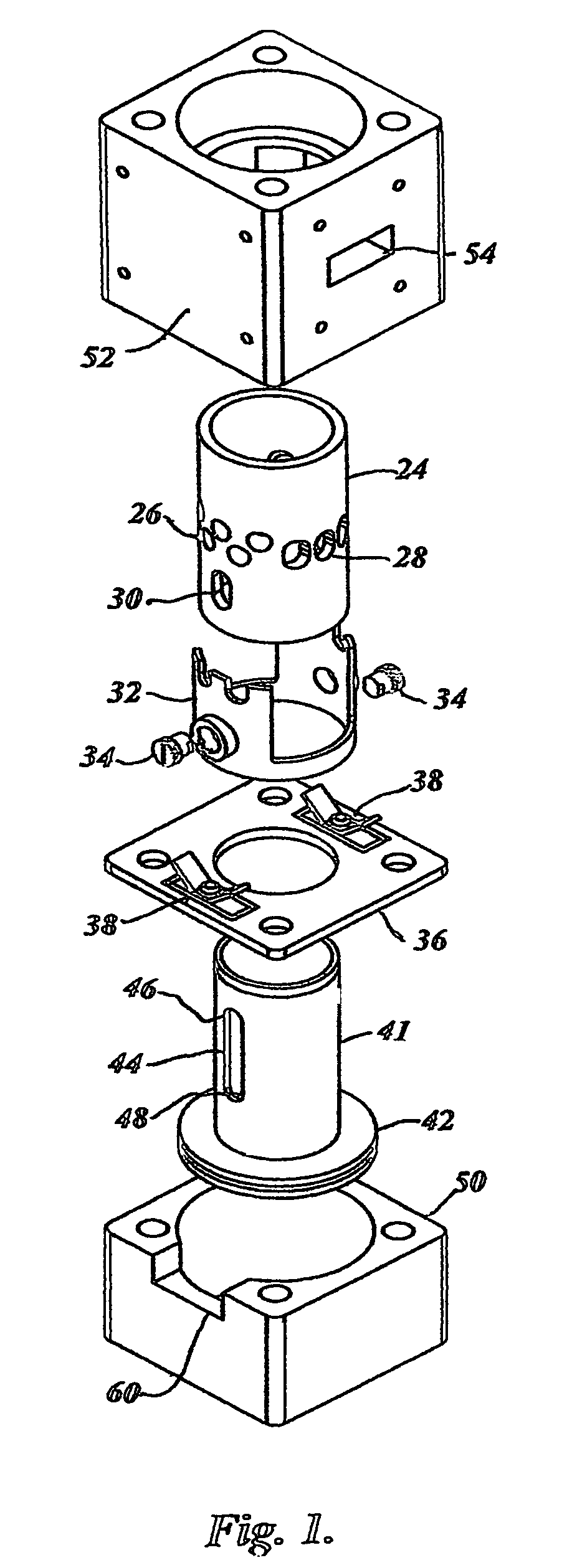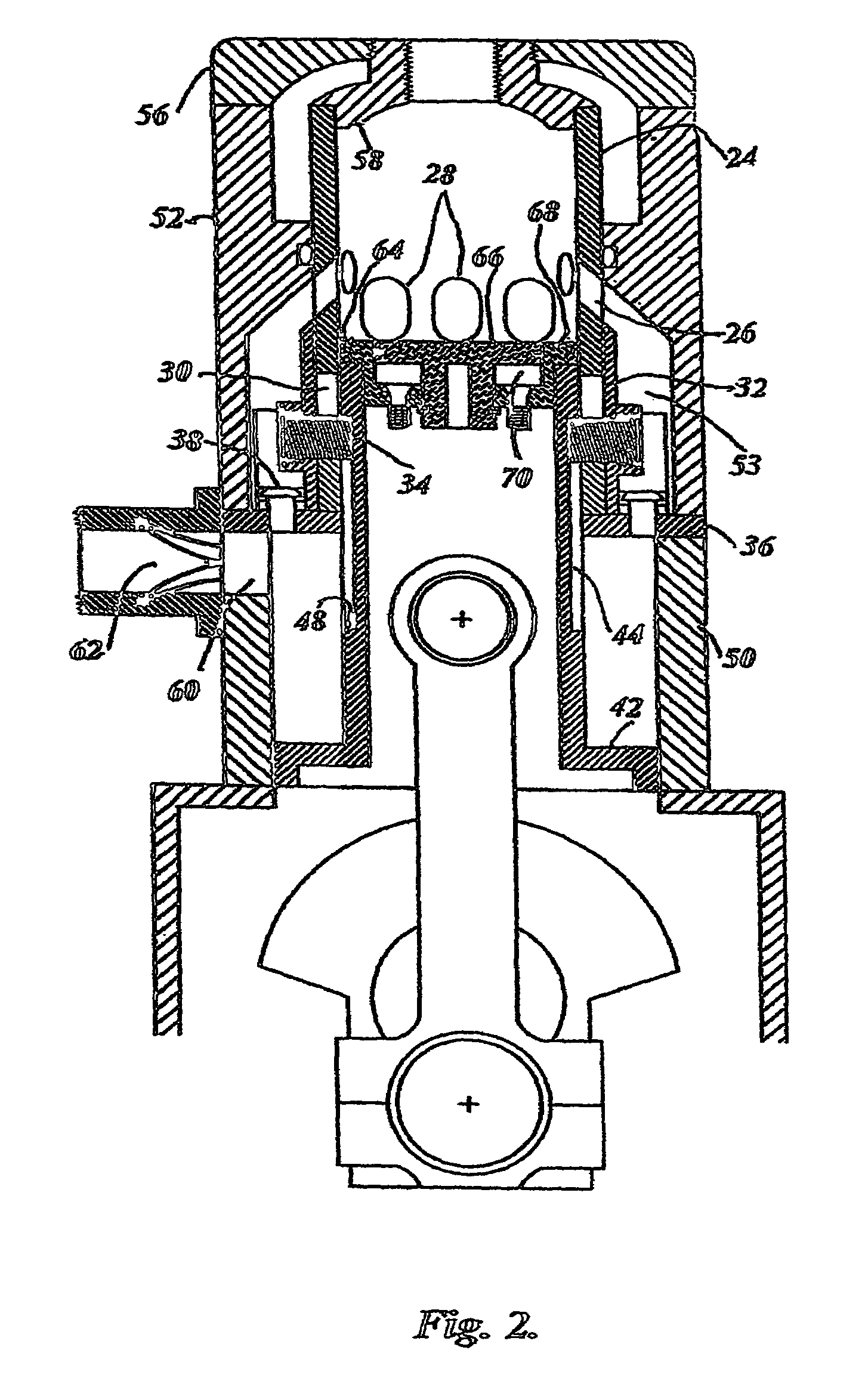Supercharged two-cycle engines employing novel single element reciprocating shuttle inlet valve mechanisms and with a variable compression ratio
a two-cycle engine and reciprocating shuttle technology, applied in the direction of machines/engines, oscillatory slide valves, mechanical equipment, etc., can solve the problems of affecting reducing the efficiency of combustion, so as to achieve high efficiency at all engine speeds, the effect of reducing the number of problems
- Summary
- Abstract
- Description
- Claims
- Application Information
AI Technical Summary
Problems solved by technology
Method used
Image
Examples
Embodiment Construction
[0068]Some conventional details of engine construction may not be described.
[0069]The sequence of operation is best described beginning with the piston at bottom dead center. As the power piston 41 begins it's upward stroke, the combined rising compressor piston 42 forces air past one-way transfer valves 38 in the valve plate 36 that separates the compressor cylinder 50 from the plenum 53. The air flows from the compressor cylinder 50 through the transfer valves 38 in the valve plate 36 into and through the plenum 53 and on through the open inlet ports 26, into the power cylinder 24, thereby filling the power cylinder 24 with a fresh air charge, assuring instant starting or further cleansing and cooling the power cylinder 24 of the previous combustion event. As the power piston 41 continues to rise, it covers the exhaust ports 28 preventing any further loss of air from the power cylinder 24. The charge of compressed air that continues to enter the power cylinder 24 from the plenum 5...
PUM
 Login to View More
Login to View More Abstract
Description
Claims
Application Information
 Login to View More
Login to View More - R&D
- Intellectual Property
- Life Sciences
- Materials
- Tech Scout
- Unparalleled Data Quality
- Higher Quality Content
- 60% Fewer Hallucinations
Browse by: Latest US Patents, China's latest patents, Technical Efficacy Thesaurus, Application Domain, Technology Topic, Popular Technical Reports.
© 2025 PatSnap. All rights reserved.Legal|Privacy policy|Modern Slavery Act Transparency Statement|Sitemap|About US| Contact US: help@patsnap.com



